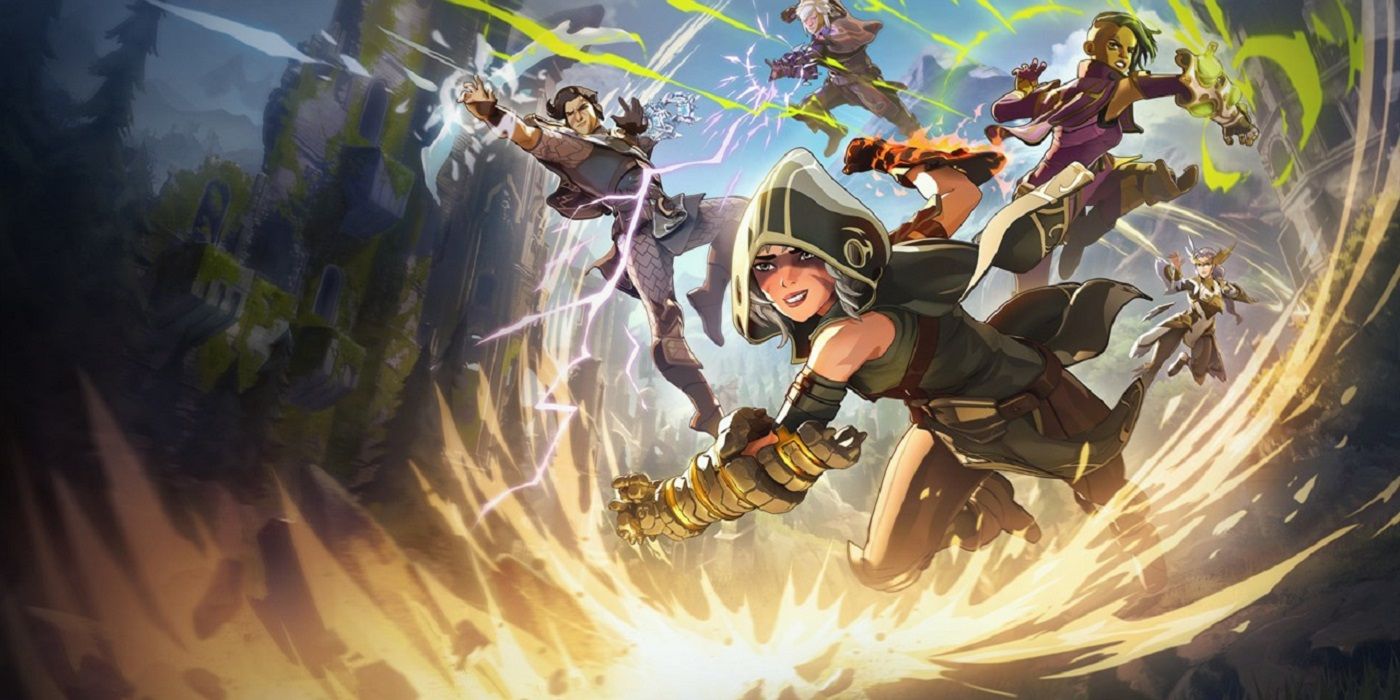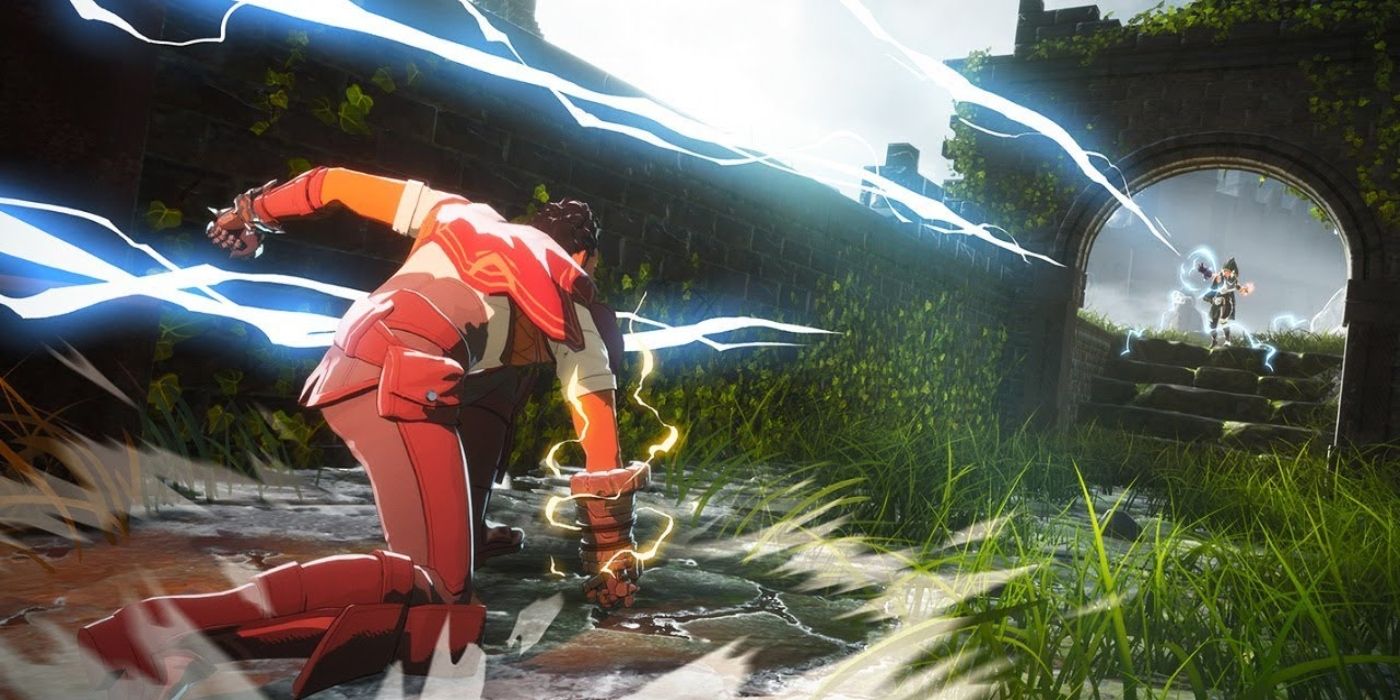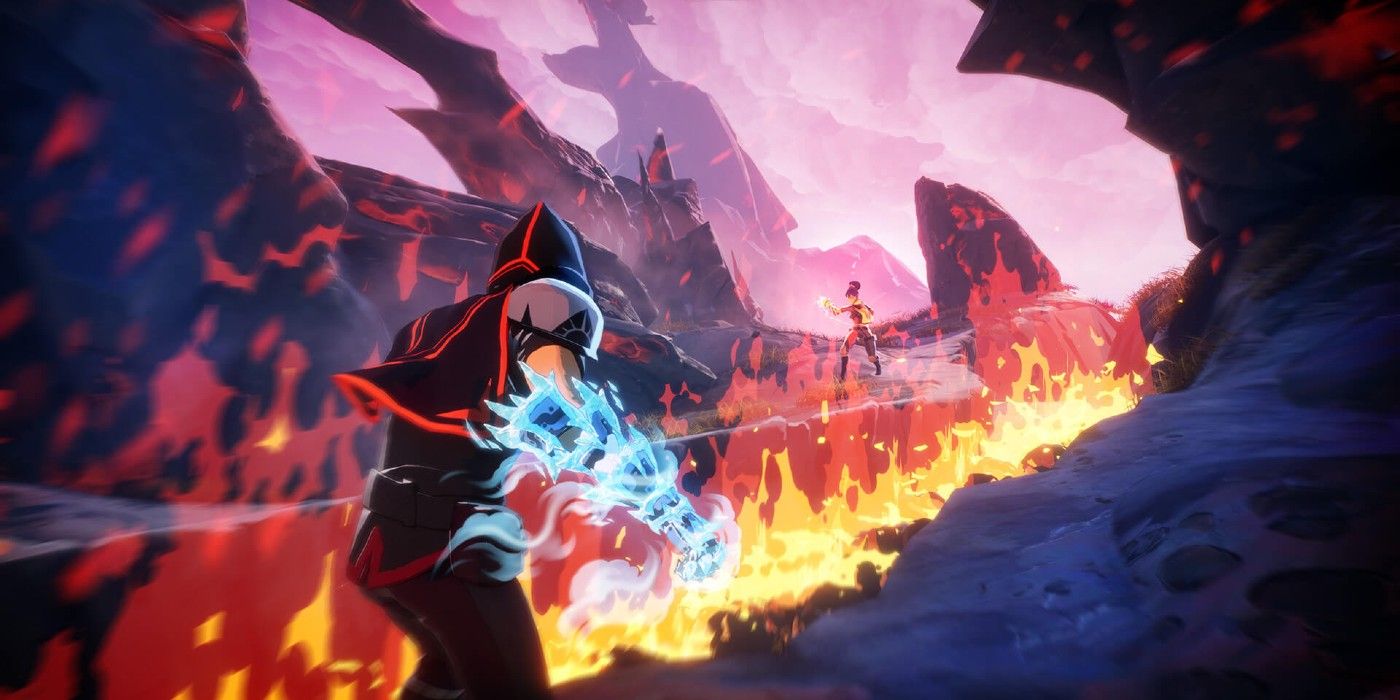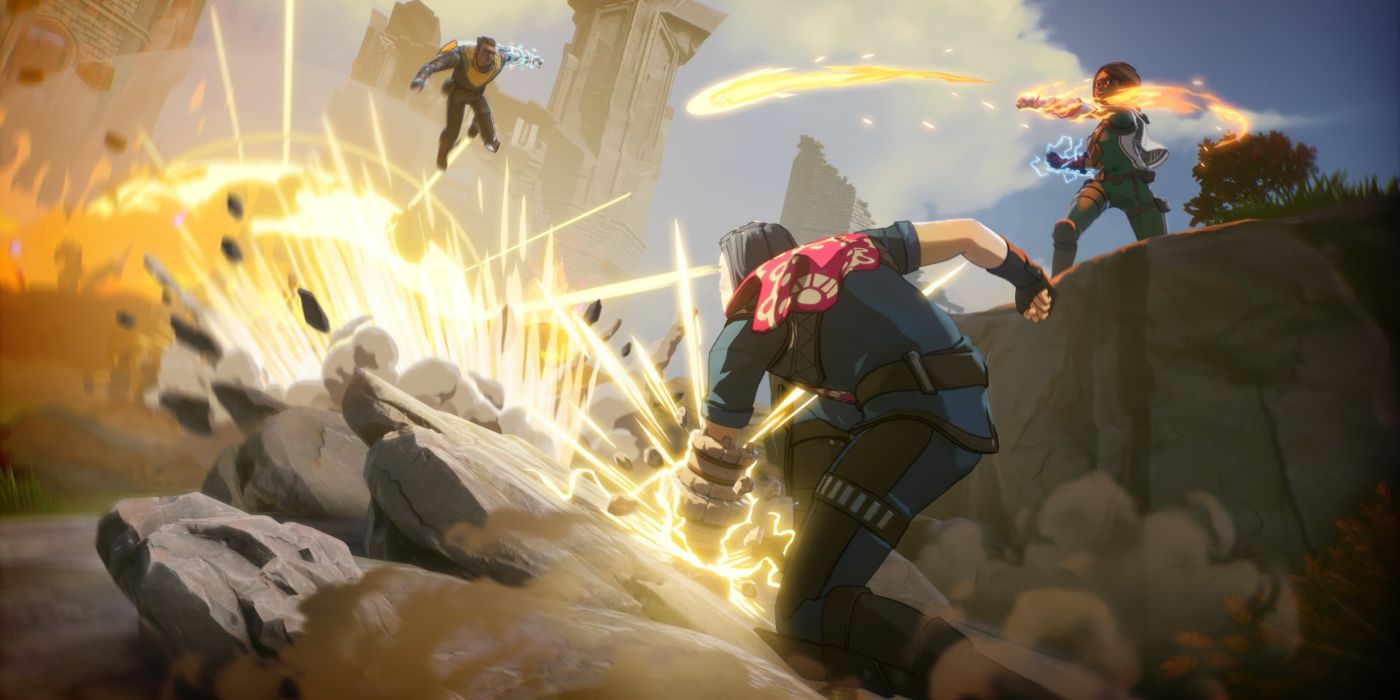The battle royale genre is becoming an increasingly crowded space. Numerous new battle royale games have released this past year alone, with some becoming big, mainstream hits and others struggling to find a consistent audience. The battle royales that seem to do well are the ones that make a concerted effort to be something markedly different from the competition, like Mediatonic's Fall Guys, which applies the battle royale concept to a mini-game competition. Spellbreak is another BR that stands out from the crowd because of its premise, and while the game is somewhat lacking at launch, it has some pretty obvious potential.
Spellbreak trades the guns and explosives found in most battle royale games for magical gauntlets and ability-enhancing runes. A variety of gauntlets are available, including ones based on fire, ice, earth, and wind, and each gauntlet has its own unique attacks. For example, the fire gauntlet can be used to blast fireballs at enemies, but it can also be used to create a wall of fire that is useful for cutting off the battlefield or forcing opponents to move to a different position.
Magical runes are the other key item Spellbreak players will find when looting chests around its battle royale map. These runes give Spellbreak players additional abilities, like invisibility, dashing, or even flying. The runes help make combat even more hectic and fast-paced, plus they are a great help when it comes to escaping from the storm.
For added strategy, players are even able to combine their Spellbreak runes and gauntlet attacks to devastating results. For instance, players can create a poison gas cloud with one gauntlet, and then zap it with electricity to boost its damage output. Alternatively, players can create a tornado with the wind gauntlet, and then shoot it with a fireball to create a powerful fire tornado. The attacks in Spellbreak are visually impressive (in no small part thanks to the game's gorgeous cel-shaded art style) and varied, ensuring over-the-top and action-packed battles whenever players encounter enemies in the game.
And that is one of Spellbreak's biggest weaknesses at launch: finding players to fight. Spellbreak's player count is capped at 42 players, who have a fairly sizable map to explore. Throw in what are very obviously bots that mostly just stand there and wait to get hit by fireballs (they seem to appear more frequently in early matches), and finding a decent fight can take forever. Many Spellbreak matches consist almost entirely of looting, with fights only happening near the very end, and then it's over. It's clear that Spellbreak either needs to increase its player count to be more in line with other battle royale games, or it needs to make the map smaller.
Spellbreak's map is another weak point for the battle royale game. Whereas other battle royale games have unique locations and points of interest that quickly become hotspots for players, Spellbreak's map comes across as generic and lacking personality. It's a big green wasteland for the most part, with some mountains and castle ruins, and nothing really stands out.
But if battle royale games have taught us anything, it's that the map is temporary. Over time, it's quite likely that the Spellbreak developers will make changes to the battle royale map, perhaps adding more interesting areas for players to explore and injecting the game with some lore to give these areas purpose. Like other battle royale games, Spellbreak will likely be vastly improved weeks from now.
Something else in Spellbreak that may be able to use some work is the flow of combat. While the battles themselves are a lot of fun, having to manually "exile" enemy orbs after defeating them slows things down too much. It's like the opposite of reviving a teammate - players stand in front of the downed enemy and hold a button until a meter fills if they want to officially get the kill. Of course, players can down every member of the enemy team to eliminate them all at once, but Spellbreak makes it easy for players to run away when things get too crazy. The orbs are able to move around the battlefield, so players will sometimes find themselves running around looking for orbs to exile.
Another area where Spellbreak has room to improve is its number of available game modes. At launch, Spellbreak only allowed for trios, similarly to how Call of Duty: Warzone was when it first released. Since then, Spellbreak added a duos mode, and it's quite likely that more team composition options will come in future updates. Unfortunately, fans are still waiting for access to the genre-standard solos and quads modes at the time of this writing, but they will certainly be added at some point down the line.
There are certainly many key ways Spellbreak can improve, but one thing that the game should be commended for is its polish. Technically speaking, Spellbreak is much more impressive than many other battle royale games are on day one, with very little in the way of performance issues, glitches, or game crashes. In fact, the only technical problem we ran into during our time with the game was a strange bug that essentially made the interact button useless until we shot off a spell. While somewhat annoying, it was easily fixed and otherwise, things ran smoothly.
Even so, Spellbreak's shortcomings at launch make it a far less compelling experience than many of the other battle royale games on the market. It will undoubtedly get better with future updates, and not only that, Spellbreak supports cross-play and is free-to-play. Battle royale fans looking for something that's a little different flavor than the military shooters that dominate the genre have no real reason not to give it a go, but they should keep their expectations in check.
Spellbreak is out now for PC, PS4, Switch, and Xbox One. Game Rant was provided with an Xbox One code for this review.




